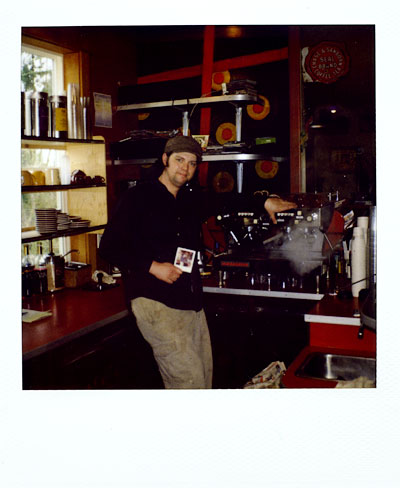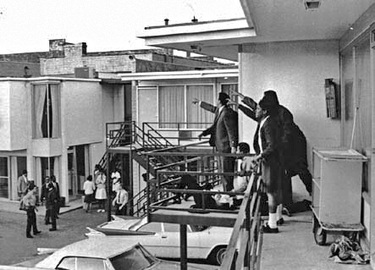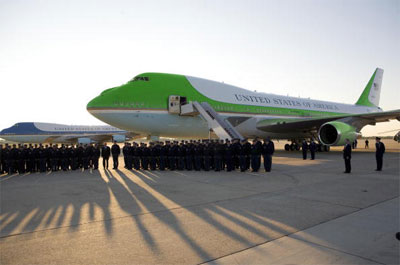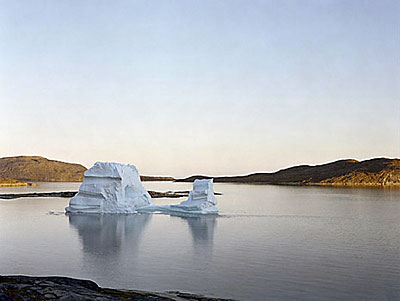|
| |
Archives
coffee

My son Robby keeps me in my drug of choice -- coffee. He works at Mukilteo Coffee near the airport on the south end of Whidbey Island. If you are on the Island drop by and say hi! You can also buy a great cup of coffee. I plan on doing a book of coffee art with him.

His card. His boss says that PHD stands for Pretty Hot Dude.
martin luther king 40 years ago today
A Drum Major for Peace
|
"Every now and then I guess we all think realistically about that day when we will be victimized with what is life's final common denominator—that something that we call death. We all think about it. And every now and then I think about my own death and I think about my own funeral. And I don't think of it in a morbid sense. And every now and then I ask myself, 'What is it that I would want said?' And I leave the word to you this morning.

"If any of you are around when I have to meet my day, I don’t want a long funeral. And if you get somebody to deliver the eulogy, tell them not to talk too long. And every now and then I wonder what I want them to say. Tell them not to mention that I have a Nobel Peace Prize—that isn’t important. Tell them not to mention that I have three or four hundred other awards—that’s not important. Tell them not to mention where I went to school.
"I'd like somebody to mention that day that Martin Luther King, Jr., tried to give his life serving others.
"I'd like for somebody to say that day that Martin Luther King, Jr., tried to love somebody.
"I want you to say that day that I tried to be right on the war question.
"I want you to be able to say that day that I did try to feed the hungry.
"And I want you to be able to say that day that I did try in my life to clothe those who were naked.
"I want you to say on that day that I did try in my life to visit those who were in prison.
"I want you to say that I tried to love and serve humanity.
"Yes, if you want to say that I was a drum major, say that I was a drum major for justice. Say that I was a drum major for peace. I was a drum major for righteousness. And all of the other shallow things will not matter. I won't have any money to leave behind. I won't have the fine and luxurious things of life to leave behind. But I just want to leave a committed life behind. And that's all I want to say."
M.L.K. Jr., in a sermon delivered at Ebenezer
Baptist Church, Atlanta, Georgia, on February
4th, 1968, two months before his death.
© The Estate of Martin Luther King, Jr.
| |
[more]
polaroids and a book

I think I'm starting a book project of Polaroids taken around the Honeymoon Lake community where I live. I'm still hesitant given that reality keeps intruding on my photography but I think this was my first shot for this project. I will decide this weekend and have more about this project. This is also the first shot taken with my black Polaroid SX-70 Alpha 1 SE with the very special blue button. The camera works like it should. Wonderful! It's in excellent shape but for the leather covering and I've ordered new leather. I may wait until I recover it before I have it pose for it's formal portrait. The SX-70 is an amazing camera and is a blast to use. It appears that I'm joining this party as it's almost over given that Polaroid has announced that it will cease production of 600 film in 2009. Until then...party on!

Spring, for me, starts when our local Ace Hardware in Freeland puts out their plastic lawn chairs which, this year, was two days before the rest of the world celebrated the start of spring. I have a picture on film of these chairs taken then but it's still in the camera. No picture taken stays in a Polaroid SX-70. I've started a Flickr set for my SX-70 Polaroids.
transportation
The New Air Force One Hybrid, 15-20% More Efficient

|
Our friends at HowStuffWorks had a look at the new presidential plane, Air Force One Hybrid. They break it down for you, from construction to operation.
It's particularly interesting to learn how the hybrid system works. "Air Force One Hybrid uses more than 2,000 lead-acid batteries in a parallel hybrid team with its four regular jet engines. That means that the plane's engines rely on a combination of fuel and battery power to turn, making them work more efficiently."
"To keep the plane from relying on fossil fuels, Air Force One Hybrid's engines use a flexible fuel system. Every day, a special team collects used cooking oil from the White House, the Capitol building and other government-owned commissaries to be cleaned and reused as biofuel. In a pinch, and for areas where biofuels aren't readily available, jet fuel can still be used."
The new Air Force One should be 15-20% more efficient than its predecessor. Not quite there yet, but a step in the right direction.
| |
[more]
thanks to The Huffington Post
iran
Murdering Iranians
|
Terrible rumors from Russia continue to swirl around the Middle East that the Cheney-Bush junta has decided to bomb Iran on April 4th or 6th, targeting not only nuclear-power research facilities but ships, planes, antiaircraft installations, and the Iranian pentagon. Apparently the nuclear-power reactor being built by Russian companies will be spared, but not much else.
| |
[more]
Russian Intelligence Sees U.S. Military Buildup on Iran Border
|
Russian military intelligence services are reporting a flurry of activity by U.S. Armed Forces near Iran's borders, a high-ranking security source said Tuesday.
| |
[more]
Iran: Danger and Opportunity
|
Cassandra and Yogi Berra are an unlikely pair, but I hear both of their voices today. Cassandra, like some of us, was cursed to be always disbelieved as she correctly predicted the future while baseballer Yogi Berra will be remembered for his penetrating insight into the flow of history, “This is like deja vu all over again."
It is through the unlikely medium of U.S. News and World Report that Cassandra speaks. The March 12 issue gives us “6 signs the U.S. may be headed for war in Iran.” The first tip the magazine highlights is the firing of Admiral William Fallon. While Fallon is hardly a “dove,” he apparently – to judge by hints he gave in an interview with Thomas Barnett published in the March issue of Esquire – had argued that an attack on Iran made no military sense. If this really was his judgment, he obviously was not the man to be “CINC [Commander-in-chief] Centcom.” That is, if the Bush administration really is intent on an attack.
Among other straws U.S. News and World Report found in the wind blowing out of Washington was the projected trip by Vice President Dick Cheney to what the magazine correctly described as a “logistics hub for military operations in the Persian Gulf,” Oman, where the Strait of Hormuz constitutes “the vulnerable oil transit chokepoint into and out of the Persian Gulf that Iran threatens to blockade in the event of war.”
Here is where Yogi Berra begins to come into the picture. As the U.S. News and World Report notes, “Back in March 2002, Cheney made a high-profile Mideast trip to Saudi Arabia and other nations that officials said at the time was about diplomacy toward Iraq and not war…” It was, as we now know, one of the concerted moves in the build-up to the already-decided-upon plan to attack Iraq. Is Cheney’s 2008 trip “like deja vu all over again?" That certainly is the inference drawn by U.S. News and World Report.
Then, U.S. News and World Report introduces the Israeli card. It reports the widely held belief that the Israeli air attack on Syria, analyzed by Sy Hersh in one of his insightful pieces of investigative reporting on February 11, 2008 in The New Yorker, was not what it was proclaimed to be, an attack on a presumed nuclear site, but a means to force the Syrians to activate their anti-aircraft electronics – as America used to do with the Russians – to detect gaps along what might be a flight path from Israel toward Iran.
Why a flight path across Syria? Both because Turkey might not allow the use of its airspace and because using Jordan’s airspace, as Israel did in its June 7, 1981 strike on the Iraqi nuclear facility at Osiriq, might seriously weaken the Jordanian regime which Israel would like to keep in place, at least for the time being.
Is a flight across Syria and Iraq to attack Iranian targets feasible? The short answer is yes: the aircraft the United States has supplied to Israel have the range and presumably could be refueled on their return at a remote base among the 14 or so bases the U.S. has built and maintains in Iraq.
U.S. News and World Report also drew attention to the stationing of a guided missile destroyer off the Lebanese coast as another indication of preparations for war. The article does not explain why but points out that the destroyer has an anti-aircraft capability; so, the inference is that it would shoot down any Syrian aircraft attempting to hit Israel.
The article curiously passes over in silence the much more impressive build-up of naval power in the Persian Gulf. As of the last report I have seen, a major part of the U.S. Navy is deployed in and around the Persian Gulf. The numbers are stunning and include not only a vast array of weapons, including nuclear weapons, cruise and other missiles and hundreds of aircraft but also “insertion” (invasion) forces and equipment. Even then, these already deployed forces amount to only a fraction of the total that could be brought to bear on Iran because aircraft, both bombers and troop and equipment transports, stationed far away in Central Asia, the Indian Ocean, Europe and even in America can be quickly employed .
Of course, deploying forces along Iran’s frontier does not necessarily mean using them. At least that is what the Administration says. However, as a historian and former participant in government, I believe that having troops and weapons on the spot makes their use more likely than not. Why is that?
| |
[more]
photography
Robert Frank’s Unsentimental Journey
Published in 1958, Robert Frank’s photographic manifesto, The Americans, torched the national myth, bringing him such comrades as Jack Kerouac, Allen Ginsberg, and—for a controversial documentary—the Rolling Stones. On a trip to China, the 83-year-old rebel of postwar film still defies expectations.
|
Robert Frank, the photographic master, the last human being it’s been said to discover anything new behind a viewfinder, collapsed in a filthy Chinese soup shop and no one had thought to bring along a camera.
He looked like something from a Kandinsky painting—slumped between a wall and stool—sea green, limp, limbs akimbo. It would have made a good, unsentimental picture: a dead man and a bowl of soup. Frank would have liked it. The lighting was right.
The shop was hidden away in the shadow of a Confucian temple in the ancient walled city of Pingyao, China, about 450 miles southwest of Beijing, where Frank had come as an honored guest of a photography festival. The city is a photographic dream, a 2,700-year-old dollhouse of clay brick, camels, coal embers, and carved cornices. So many photographers had descended upon the place that a picture of a man taking a picture of a man taking a picture of a man taking a picture of a picture was considered interesting enough and yet nobody at the dead man’s table had so much as a sketching tablet.
Frank had not looked well even before the soup arrived. He was lumpy and disheveled, his eyes rheumy, the lids bloated. He carried the general form of a man who had been pummeled senseless with a feather pillow. His Dunkin’ Donuts cap had the flat, leathery texture of a dead cat on a highway. His shirt was misbuttoned, his shoes untied, his trousers—his trusted friend the trousers: he had not changed them in a while. They became such companions during his road trip to China—the old Beatnik and these new blue leggings—that I gave the trousers a name: Billy. Frank liked the name. It seemed unsentimental in some way. Frank liked things unsentimental.
Frank had arrived in this coal-choked outpost without a proper pair of pants. The cuffs were tattered on his other ones, ragged from being worn every day for three consecutive years. This would never do, as the titan of postwar film—the “Manet of the new photography,” the critic Janet Malcolm had called him—would be expected by the Chinese authorities to make speeches and grand statements about the world’s newest superpower and say something to encourage the awakening sensibilities of its artists. Robert Frank had consented to hang the photographs from his seminal book, The Americans, at the Pingyao International Photography Festival late last fall—only the second time the complete work has ever been displayed since the book was published 50 years ago.
And to mark the occasion, a junior Communist Party official was dispatched to purchase a pair of trousers for him: size-44 waist, 29 leg.
| |
[more]
thanks to RangefinderForum.com
energy
The Bad News at the Pump
The $100-plus Barrel of Oil and What It Means
|
On Monday March 3, the price of crude oil reached $103.95 per barrel on the New York Mercantile Exchange, surpassing the record set nearly 30 years ago during another moment of chaos in the Middle East. Will that new mark prove distinctive in the annals of world history or will it be forgotten as energy prices drop, just as they did following their April 1980 peak?
When oil costs are plotted over time, the 1980 oil crisis -- prompted by Ayatollah Khomeini's Iranian revolution -- stands out as a sharp spike on that price curve. Both before and after that moment, however, oil supplies proved largely sufficient to meet rising global demand, in part because the Saudis and other major producers were capable of compensating for declining Iranian production. They simply increased their output substantially, dumping a surplus of oil onto the global market. Aided by the development of new fields in Alaska and the North Sea, prices dropped precipitously and stayed low through the 1990s (except for a brief spike following the Iraqi invasion of Kuwait in August 1990).
Nothing similar is likely to happen now. For the present surge in prices -- crude oil costs have risen by 74% over the past year -- no such easy solution is in sight. To begin with, we face not a sudden spike, but the results of a steady, relentless climb that began in 2002 and shows no signs of abating; nor can this rise be attributed to a single, chaos-causing factor in the energy business or in global politics. It is instead the product of multiple factors endemic to energy production and characteristic of the current era. There is no prospect of their vanishing any time soon.
Three factors, in particular, are responsible for the current surge: intensifying competition for oil between the older industrial powers and rising economic dynamos like China and India; the inability of the global energy industry to expand supplies to keep pace with growing demand; and intensifying instability in the major oil-producing areas.
| |
[more]
5 Myths About Breaking Our Foreign Oil Habit
|
With oil prices still flirting with $100 a barrel, everyone is talking about the need for "energy independence." Late last year, President Bush signed the Energy Independence and Security Act of 2007; Sen. John McCain has declared, "We need energy independence"; and Sen. Barack Obama has called for "serious leadership to get us started down the path of energy independence."
This may all be good politics. But the idea that the United States, the world's single largest energy consumer, can be independent of the $5 trillion-per-year energy business -- the world's single biggest industry -- is ludicrous on its face. The push for energy independence is based on a series of false premises . Here are a few of the most pernicious ones.
1 Energy independence will reduce or eliminate terrorism.
In a speech last year, former CIA director R. James Woolsey Jr. had some advice for American motorists: "The next time you pull into a gas station to fill your car with gas, bend down a little and take a glance in the side-door mirror. . . . What you will see is a contributor to terrorism against the United States." Woolsey is known as a conservative, but plenty of liberals have also eagerly adopted the mantra that America's foreign oil purchases are funding terrorism.
But the hype doesn't match reality. Remember, the two largest suppliers of crude to the U.S. market are Canada and Mexico -- neither exactly known as a belligerent terrorist haven.
Moreover, terrorism is an ancient tactic that predates the oil era. It does not depend on petrodollars. And even small amounts of money can underwrite spectacular plots; as the 9/11 Commission Report noted, "The 9/11 plotters eventually spent somewhere between $400,000 and $500,000 to plan and conduct their attack." G.I. Wilson, a retired Marine Corps colonel who has fought in Iraq and written extensively on terrorism and asymmetric warfare, calls the conflation of oil and terrorism a "contrivance." Support for terrorism "doesn't come from oil," he says. "It comes from drugs, crime, human trafficking and the weapons trade."
| |
[more]
photography
Review: Broken Line by Olaf Otto Becker
|
Why would someone load an 8x10 camera - a heavy and cumbersome piece of photographic equipment - into a small, inflatable craft and them move up the coast of Greenland to take photographs? There are probably many reasons for such an endeavour, and it would seem that picking just a single one would miss too many other important aspects. In that sense, treating Broken Line by Olaf Otto Becker as merely a book of landscapes, would be too one-dimensional.
| |
[more]
OLAF OTTO BECKER

[more]
health care
The Next Failure of Health Care Reform
Yes, We Can! Can We?
|
A major problem--if not the major problem--for many people living in the U.S. is the difficulty of accessing and paying for medical care when they are sick. For this reason, candidates in the presidential primaries of 2008--the Democrats more often than the Republicans--have been recounting stories about the health-related tragedies they have encountered in meetings with ordinary people around the country (an exercise conducted in the U.S. every four years, at presidential election time). These stories tell of the enormous difficulties and suffering faced by many people in their attempts to get the medical care they need. I have been around long enough--I was senior health advisor to Jesse Jackson in the Democratic primaries of 1984 and 1988--to know how frequently Democratic candidates, over the years, have referred to such cases. The only things that change are the names and faces in these human tragedies. Otherwise, the stories, year after year, are almost the same.
In the Democratic Party primaries of 1988, for example, candidate Michael Dukakis talked about a young single mother who had two jobs and still could not afford medical insurance for herself and her children. In 1992, Bill Clinton did the same, changing the story only slightly. This time it was the case of a woman with diabetes who could not get health insurance because of her chronic condition. And now, in the 2008 primaries, Hillary Rodham Clinton (whom I worked with on the White House Health Care Reform Task Force in 1993) describes a similar case. This time it is a single woman, with two daughters, who cannot pay her medical bills because her congenital heart defect makes it impossible for her to get medical insurance coverage. And Barack Obama describes similar cases, with the eloquence that characterizes all of his speeches. He frequently refers to his own mother, who had cancer and had to worry not only about her illness but about paying her medical bills.
All these cases are tragic and are representative of a situation faced by millions of people in the U.S. every year. But, I am afraid that unless the winning Democratic candidate, once elected president (and I hope he or she will be), develops a more comprehensive health care proposal than any of those put forward in the primaries so far, we will see the same situation continue. Democratic candidates in the 2012 primaries, and in the 2016 primaries, will still be referring to single mothers with chronic health conditions who cannot pay their medical bills. The proposals put forward by Obama and Clinton underestimate the gravity of the problem in the U.S. medical care sector. The situation is bad and is getting worse: the number of people who are uninsured and underinsured has been growing since 1978.
| |
[more]
so close, yet so far

I installed a neutral density filter over a pack of Polaroid 600 film and got it loaded in my stainless and leather SX-70. Unfortunately, the black pack cover didn't eject properly and jammed leaving the mirror in the up position. I removed the bent black pack cover but can't take a picture. I also have a white plastic Model 2 SX-70 with a broken viewing lens. I put the pack in the white one and it works but I can't focus or compose. This was taken at infinity and pointed at the subject. The ND filter did it's job. The exposure was fine. An answer on a SX-70 forum suggested putting the black pack cover back in the pack and that would cause it to be automatically ejected and return the mirror. Didn't work. The camera made little squeaking sounds but that was all. It was suggested that the motor might be too weak. I will get another pack of 600 film and try one more time. Then it will be time to look for another SX-70. My white one is not repairable by me. I must have a SX-70. They are too much fun. Does anyone reading this have a SX-70 laying about that wants to be used? I accept all donations.
|
|
|
|








